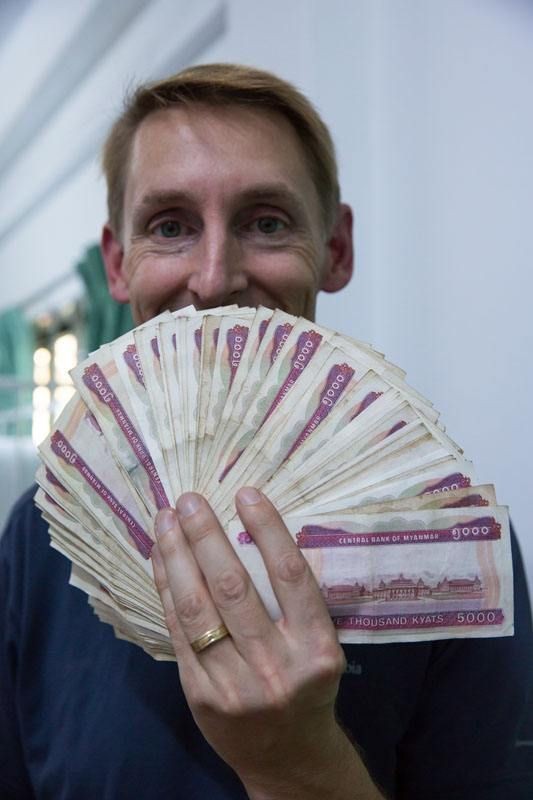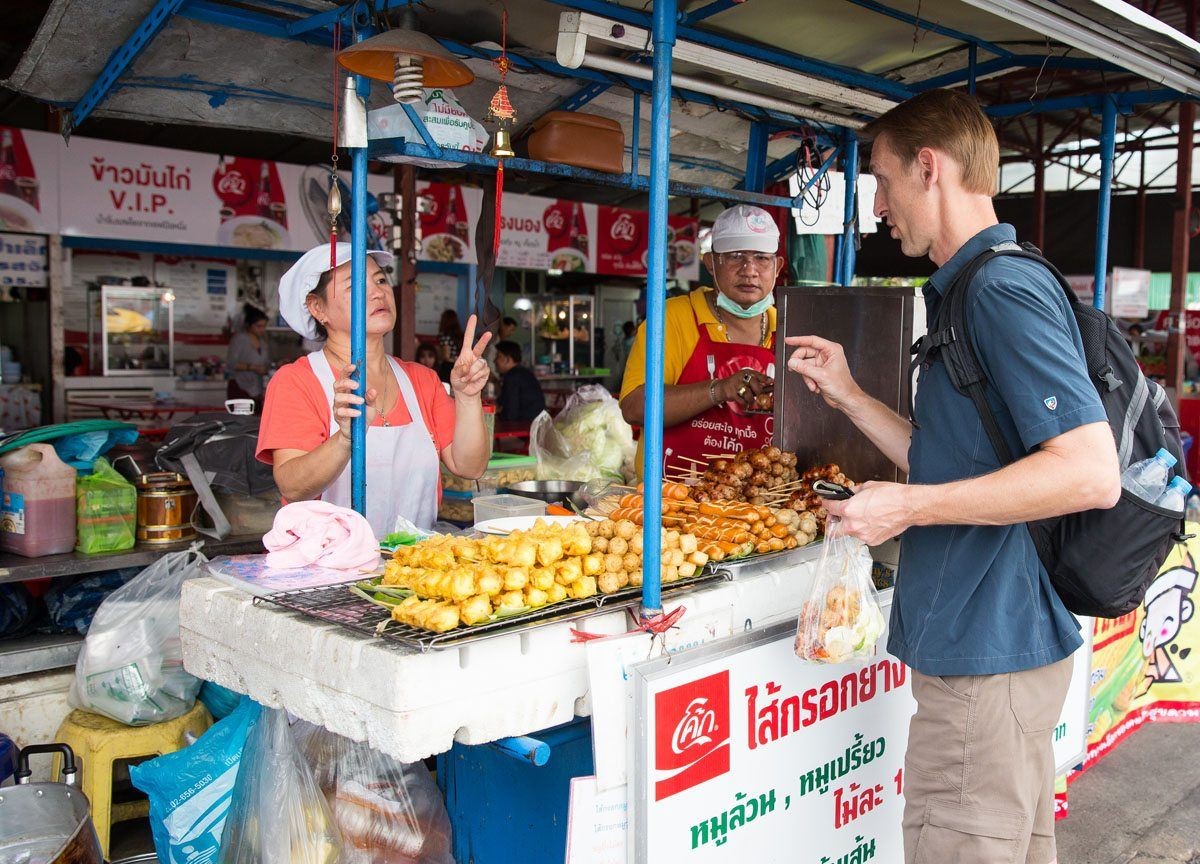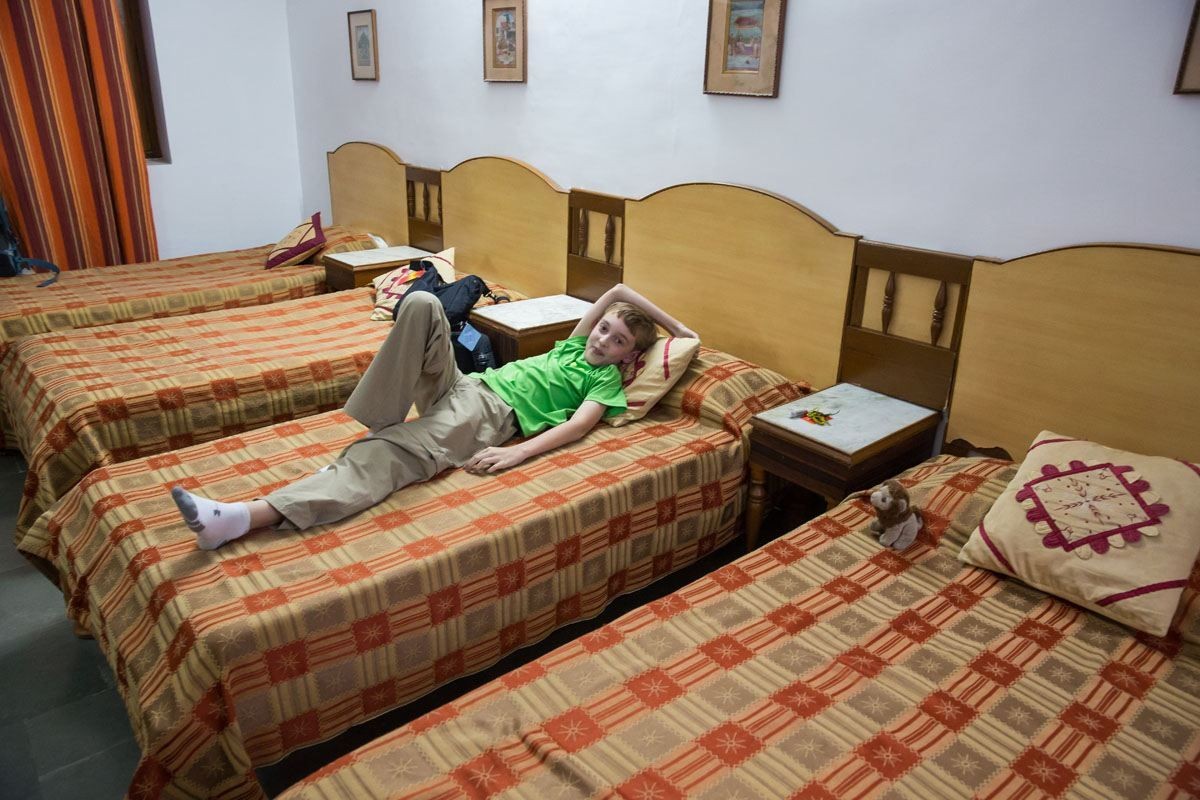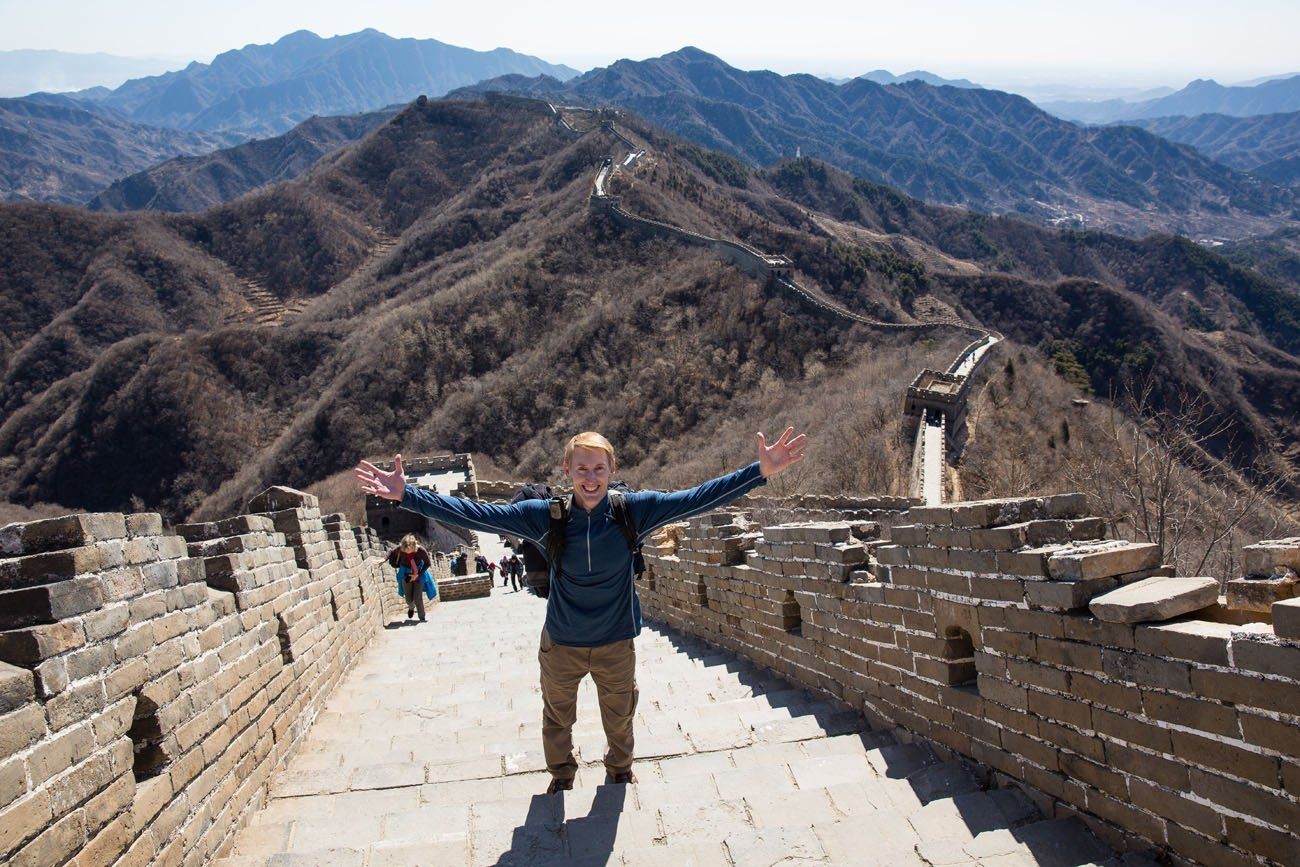Traveling around the world is a dream for many, and understanding How Much To Travel Around The World is the first step to making that dream a reality. SIXT.VN offers tailored travel solutions in Vietnam, ensuring you get the most out of your adventure without breaking the bank. Planning and budgeting are key; let’s explore the costs associated with global travel and how you can make it affordable, including travel insurance, flight booking and travel itineraries.
1. What Factors Influence the Cost to Travel Around the World?
The total cost of circumnavigating the globe varies significantly depending on several key factors. Choosing destinations wisely and understanding your travel style are crucial for effective budget management.
1.1. Destination Choices: Developed vs. Developing Countries
The countries you choose to visit have the most significant impact on your travel expenses.
-
Developed Countries (e.g., Europe, Australia, New Zealand, Japan): Expect higher costs, averaging around $125 per person per day.
-
Developing Countries (e.g., Southeast Asia, Africa, South America): These destinations offer more budget-friendly options, where you can comfortably spend as little as $50 per person per day.
According to the United Nations World Tourism Organization (UNWTO), destinations in Southeast Asia experienced a 15% increase in international tourist arrivals in 2023, highlighting their growing popularity and affordability. Strategic planning to include more countries with lower living costs can significantly reduce your overall expenses.
 A bustling street market in Hanoi, Vietnam, showcasing the vibrant and affordable local culture
A bustling street market in Hanoi, Vietnam, showcasing the vibrant and affordable local culture
1.2. Transportation Methods: Flights, Buses, and Trains
Your choice of transportation greatly affects your budget.
- Flights: The most expensive option.
- Buses and Trains: More affordable but slower.
According to a 2022 report by the International Air Transport Association (IATA), strategic flight booking, such as taking advantage of off-peak seasons and using budget airlines, can reduce airfare costs by up to 30%. In Vietnam, SIXT.VN can arrange convenient and cost-effective transportation options, including airport transfers and local transportation.
1.3. Travel Pace: Slow Travel vs. Fast Travel
How often you change locations directly impacts your spending.
- Frequent Moves: Higher costs due to transportation expenses.
- Slower Pace: Lower daily costs, allowing for deeper immersion in local culture.
A study by the Adventure Travel Trade Association (ATTA) in 2023 found that travelers who spend more time in a single location tend to spend less overall, as they reduce transportation costs and can take advantage of longer-term accommodation discounts.
1.4. Accommodation Preferences: Hostels, Hotels, and Rentals
The type of accommodation you choose plays a significant role in your budget.
- Hostels: Economical for solo travelers.
- Budget Hotels and B&Bs: Affordable for families and couples.
- Apartment Rentals: Offer kitchen access, saving on food costs.
According to Booking.com data from 2023, travelers who opt for hostels or apartment rentals save an average of 40% on accommodation costs compared to those staying in mid-range hotels. SIXT.VN offers a variety of accommodation options in Vietnam to suit different budgets and preferences, from budget-friendly hostels to luxurious hotels.
1.5. Food Choices: Local Cuisine vs. Western Restaurants
Your dining habits can significantly impact your travel budget.
- Local Food: Eating at street food stalls and local eateries is much cheaper and offers an authentic experience.
- Western Restaurants: Dining in restaurants that cater to Western tastes is more expensive.
Research from TripAdvisor in 2023 indicates that dining at local food stalls can be up to 70% cheaper than eating at tourist-oriented restaurants. Embrace the local cuisine to save money and enjoy a more authentic culinary experience.
1.6. Activities and Tours: Free vs. Paid Activities
The activities you choose also play a crucial role in determining the overall travel cost.
- Free Activities: Hiking, exploring cities on your own, visiting free museums.
- Paid Activities: Guided tours, adventure sports, concerts.
According to a 2023 survey by the Global Sustainable Tourism Council (GSTC), travelers are increasingly looking for authentic and immersive experiences that don’t always require significant expenditure, such as exploring local markets, attending community events, and volunteering.
2. What are the Estimated Costs for Traveling Around the World?
Based on various travel budgets and experiences, here’s a general estimate:
- Mid-Range Budget: $25,000 to $35,000 per person per year.
- Luxury Travel: $50,000 to $60,000 or more per person per year.
- Budget Travel: Less than $25,000 per person per year.
For solo travelers, aiming for around $25,000 per year (just over $2,000 per month or $66 per day) is a realistic goal. Keep in mind these costs vary based on currency exchange rates which can affect travel expenses.
 A traveler enjoying street food in Hanoi, Vietnam, experiencing the local culture
A traveler enjoying street food in Hanoi, Vietnam, experiencing the local culture
3. How Can You Reduce the Cost of Traveling Around the World?
Traveling the world doesn’t have to break the bank. By implementing smart strategies and making informed choices, you can significantly reduce your expenses.
3.1. Travel During the Off-Season
Traveling during the off-season or shoulder season can lead to substantial savings on flights, accommodations, and activities. For example, visiting Europe in the spring or fall can be much cheaper than traveling during the peak summer months.
3.2. Utilize Travel Rewards Programs
Leverage travel rewards programs and credit cards to accumulate points and miles that can be redeemed for flights and accommodations. Many airlines and hotel chains offer loyalty programs that provide exclusive benefits, such as free upgrades and discounted rates.
3.3. Consider House Sitting or Pet Sitting
House sitting or pet sitting allows you to stay in accommodations for free in exchange for taking care of someone’s home or pets. Websites like TrustedHousesitters connect travelers with homeowners in need of reliable caretakers.
3.4. Cook Your Own Meals
Eating out can quickly deplete your travel budget. Opt for accommodations with kitchen facilities and cook your own meals whenever possible. Visit local markets to purchase fresh ingredients and save money on dining expenses.
3.5. Take Advantage of Free Activities
Many destinations offer a variety of free activities, such as hiking, visiting parks, exploring museums on free admission days, and attending local events. Take advantage of these opportunities to experience the local culture without spending a fortune.
4. What are the Benefits of Traveling Long-Term?
Long-term travel offers unique advantages that shorter trips simply can’t provide.
4.1. Deeper Cultural Immersion
Spending more time in a location allows you to immerse yourself in the local culture, learn the language, and develop meaningful connections with locals. This deeper level of understanding enriches your travel experience and broadens your perspective.
4.2. Increased Flexibility
Long-term travel provides greater flexibility in your itinerary, allowing you to adapt to unexpected opportunities and experiences. You can linger in places you love, explore off-the-beaten-path destinations, and take your time getting from one place to another.
4.3. Cost Savings
Despite the initial investment, long-term travel can often be more cost-effective than shorter trips. By traveling at a slower pace, utilizing budget-friendly accommodations, and cooking your own meals, you can significantly reduce your daily expenses.
4.4. Personal Growth
Long-term travel fosters personal growth and self-discovery. Stepping outside your comfort zone, overcoming challenges, and navigating unfamiliar environments can boost your confidence, resilience, and adaptability.
 A traveler enjoying a scenic view in Sapa, Vietnam, demonstrating immersive travel
A traveler enjoying a scenic view in Sapa, Vietnam, demonstrating immersive travel
5. What are Some Essential Tips for Planning a Round-the-World Trip?
Planning a trip around the world requires careful consideration and attention to detail.
5.1. Create a Detailed Budget
Develop a comprehensive budget that accounts for all potential expenses, including flights, accommodations, transportation, food, activities, visas, and miscellaneous costs. Use budgeting tools and travel apps to track your spending and stay within your financial limits.
5.2. Research Visa Requirements
Investigate the visa requirements for each country on your itinerary and apply for visas well in advance. Some countries offer visas on arrival, while others require you to obtain a visa before you travel.
5.3. Pack Light
Pack light to avoid checked baggage fees and make it easier to navigate airports and public transportation. Choose versatile clothing items that can be mixed and matched, and invest in lightweight travel gear.
5.4. Stay Connected
Purchase a local SIM card or portable Wi-Fi device to stay connected while traveling. This will allow you to access maps, translation apps, and communication tools, as well as stay in touch with family and friends.
5.5. Learn Basic Phrases
Learning basic phrases in the local language can enhance your travel experience and facilitate interactions with locals. Even a few simple greetings and expressions of gratitude can go a long way in building rapport and showing respect for the local culture.
6. What Are Viable Itineraries for Traveling Around The World?
Several possible itineraries cater to different interests and budgets:
6.1. The Backpacker Route
- Duration: 6-12 months
- Destinations: Southeast Asia, India, South America
- Budget: $15,000 – $25,000
This itinerary focuses on budget-friendly destinations with vibrant cultures and stunning landscapes.
6.2. The Cultural Explorer Route
- Duration: 12-18 months
- Destinations: Europe, Asia, South America, Africa
- Budget: $30,000 – $45,000
This route emphasizes cultural immersion, visiting historical sites, museums, and local communities.
6.3. The Adventure Seeker Route
- Duration: 9-15 months
- Destinations: New Zealand, South America, Africa, Southeast Asia
- Budget: $35,000 – $50,000
This itinerary is designed for adrenaline junkies, featuring activities like hiking, diving, and wildlife safaris.
7. How Can SIXT.VN Enhance Your Travel Experience in Vietnam?
SIXT.VN offers a range of services designed to make your travel in Vietnam seamless and enjoyable.
7.1. Airport Transfers
Enjoy a stress-free arrival with SIXT.VN’s reliable and comfortable airport transfer services. A private car will be waiting for you upon arrival, ensuring a smooth transition to your accommodation.
7.2. Hotel Bookings
SIXT.VN provides a curated selection of hotels to suit every budget and preference. Whether you’re looking for a budget-friendly hostel or a luxurious resort, you’ll find the perfect accommodation through SIXT.VN.
7.3. Tours and Activities
Discover Vietnam’s hidden gems with SIXT.VN’s diverse range of tours and activities. From exploring historical sites to indulging in culinary experiences, there’s something for everyone.
7.4. Flight Booking
Book your flights with ease through SIXT.VN, taking advantage of competitive prices and convenient booking options.
7.5. Travel Consultation
Benefit from personalized travel consultation services to tailor your itinerary to your specific interests and preferences. SIXT.VN’s experienced travel advisors can provide valuable insights and recommendations to help you make the most of your trip.
 A street in Hanoi, Vietnam, showcasing the city's unique charm and beauty
A street in Hanoi, Vietnam, showcasing the city's unique charm and beauty
8. What are the Latest Travel Trends and Updates for Vietnam?
Stay informed about the latest travel trends and updates for Vietnam to ensure a smooth and enjoyable trip.
8.1. Visa Policy Updates
Vietnam has recently implemented a new visa policy, extending the validity of e-visas to 90 days and allowing multiple entries. This makes it easier for travelers to explore the country at their own pace.
8.2. New Tourist Attractions
Several new tourist attractions have opened in Vietnam, including eco-tourism sites in the Mekong Delta and cultural centers in Hanoi and Ho Chi Minh City. These new attractions offer unique and immersive experiences for visitors.
8.3. Sustainable Tourism Initiatives
Vietnam is increasingly focused on promoting sustainable tourism practices. Many hotels and tour operators are adopting eco-friendly initiatives to minimize their environmental impact and support local communities.
8.4. Digital Transformation in Tourism
The tourism industry in Vietnam is undergoing a digital transformation, with more businesses offering online booking and payment options. This makes it easier for travelers to plan and manage their trips.
9. How to Handle Unexpected Costs While Traveling?
Even with careful planning, unexpected costs can arise during your travels.
9.1. Set Aside a Contingency Fund
Allocate a contingency fund to cover unexpected expenses such as medical emergencies, travel delays, or lost belongings. Aim to set aside at least 10-15% of your total budget for unforeseen circumstances.
9.2. Purchase Travel Insurance
Invest in comprehensive travel insurance to protect yourself against medical emergencies, trip cancellations, lost luggage, and other unexpected events. Choose a policy that provides adequate coverage for your specific needs and activities.
9.3. Be Flexible with Your Itinerary
Maintain flexibility in your itinerary to accommodate unexpected delays or changes in plans. Avoid booking non-refundable accommodations or activities, and be prepared to adjust your schedule as needed.
9.4. Utilize Free Resources
Take advantage of free resources such as Wi-Fi hotspots, tourist information centers, and online travel forums to access valuable information and assistance.
10. FAQs About the Cost to Travel Around the World
10.1. Is it cheaper to travel solo or with a group?
Solo travel can be cheaper than group travel, as you have more flexibility in choosing budget-friendly accommodations and activities. However, traveling with a group can sometimes result in shared expenses, such as transportation and accommodation costs.
10.2. How can I find affordable flights?
Use flight comparison websites, be flexible with your travel dates, consider flying into smaller airports, and book flights well in advance or at the last minute to find affordable fares.
10.3. What are the best ways to save money on accommodations?
Stay in hostels, guesthouses, or Airbnb rentals, travel during the off-season, and consider house sitting or couch surfing to save money on accommodations.
10.4. How much should I budget for food per day?
Budgeting $20-$40 per day for food is generally sufficient, depending on your dining preferences and the cost of food in your destination.
10.5. What are some essential items to pack for a round-the-world trip?
Pack lightweight clothing, comfortable shoes, a universal adapter, a first-aid kit, travel documents, and a portable charger for your electronic devices.
10.6. How can I stay connected while traveling internationally?
Purchase a local SIM card, use portable Wi-Fi devices, or rely on free Wi-Fi hotspots to stay connected while traveling internationally.
10.7. What should I do if I run out of money while traveling?
Contact your bank or credit card company for assistance, seek help from your embassy or consulate, or consider working or volunteering in exchange for accommodation and meals.
10.8. How can I stay safe while traveling around the world?
Research your destinations, avoid risky areas, protect your belongings, and trust your instincts to stay safe while traveling around the world.
10.9. What are the benefits of using a travel agent?
Travel agents can provide expert advice, save you time and stress, and offer access to exclusive deals and promotions.
10.10. What are the best resources for planning a round-the-world trip?
Use travel blogs, guidebooks, online travel forums, and social media groups to gather information and inspiration for planning your round-the-world trip.
Traveling around the world is an achievable dream with proper planning and budgeting. By choosing affordable destinations, utilizing cost-saving strategies, and taking advantage of SIXT.VN’s services in Vietnam, you can embark on an unforgettable adventure without breaking the bank.
Ready to start your own adventure? Visit SIXT.VN today to explore our travel consultation services, airport transfers, hotel bookings, tours, and flight options. Let us help you plan the perfect trip to Vietnam and beyond!
Address: 260 Cau Giay, Hanoi, Vietnam.
Hotline/Whatsapp: +84 986 244 358.
Website: SIXT.VN.



